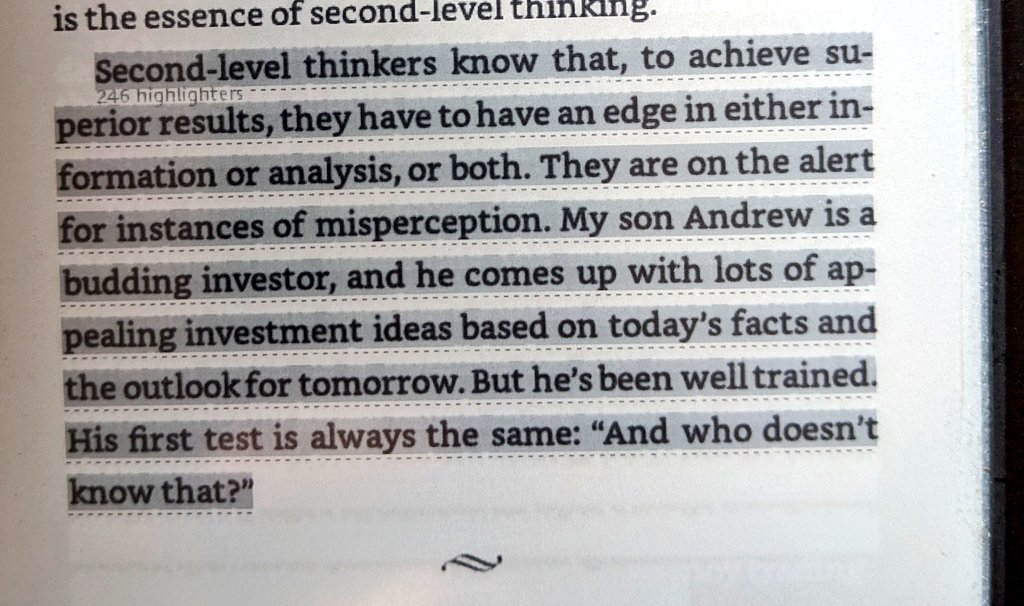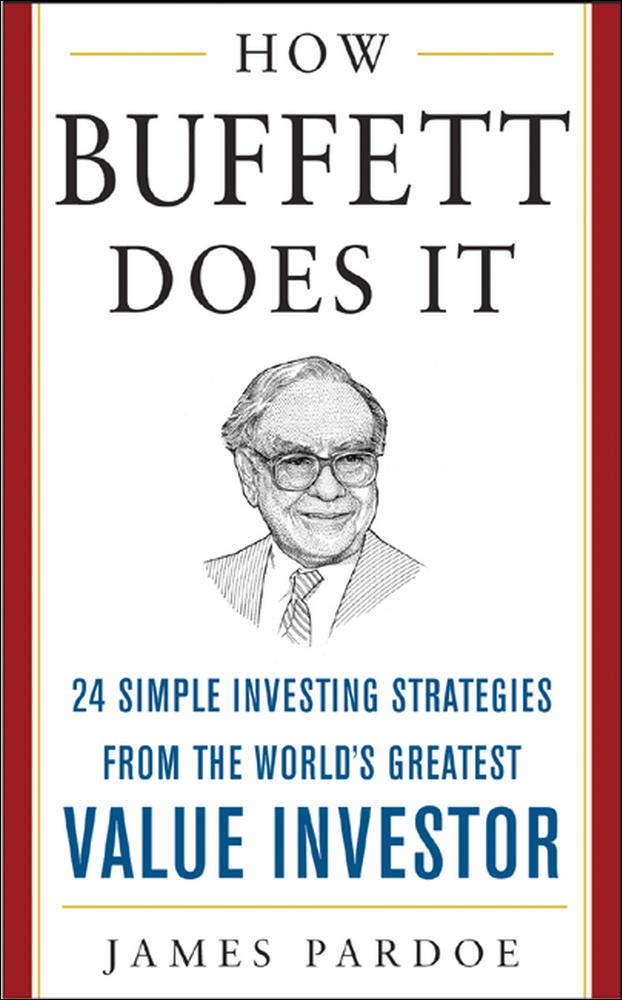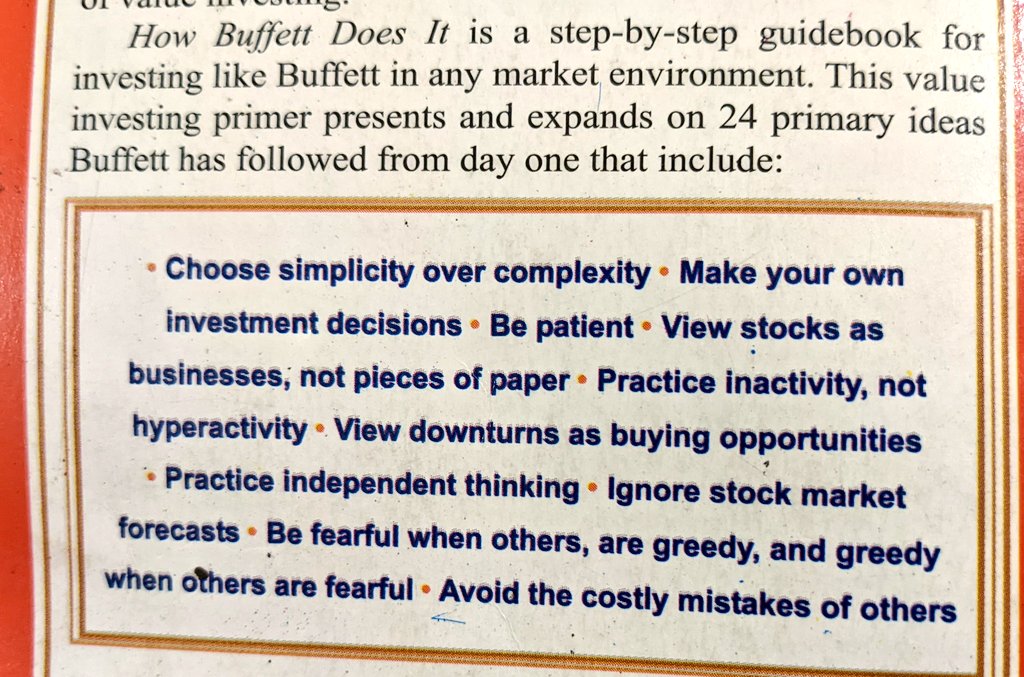1/18
#BookRecommendation #BookTwitter
#DecisionMaking
How To Decide by Annie Duke.
A brilliant no frills book that offers a framework for thinking about how to improve your decision making , along with a set of tools that help execute it.
A few of my takeaways from this gem !
#BookRecommendation #BookTwitter
#DecisionMaking
How To Decide by Annie Duke.
A brilliant no frills book that offers a framework for thinking about how to improve your decision making , along with a set of tools that help execute it.
A few of my takeaways from this gem !

2/18
There are only 2 things that determine HOW your life turns out : LUCK & QUALITY OF DECISION MAKING.
We have some control over only one of those two things.
When you make better quality decisions, you increase the chances of good things happening to you.
There are only 2 things that determine HOW your life turns out : LUCK & QUALITY OF DECISION MAKING.
We have some control over only one of those two things.
When you make better quality decisions, you increase the chances of good things happening to you.

3/18
Our objective is to choose an option that gains most ground in achieving our goals.
Sometimes which entails the least risk.
Thereby we examine the quality of the beliefs informing the decision,the available options & try to envisage the future based on our choices.
Our objective is to choose an option that gains most ground in achieving our goals.
Sometimes which entails the least risk.
Thereby we examine the quality of the beliefs informing the decision,the available options & try to envisage the future based on our choices.
4/18
In every domain , the outcome tail is wagging the decision dog aka RESULTING ( Outcome bias ).
The outcome is good ?
Good decision.
The outcome is bad ?
Bad decision!
But reality is that the outcome being good / bad isn't necessarily due to the decision making ! 🤷🏻♀️


In every domain , the outcome tail is wagging the decision dog aka RESULTING ( Outcome bias ).
The outcome is good ?
Good decision.
The outcome is bad ?
Bad decision!
But reality is that the outcome being good / bad isn't necessarily due to the decision making ! 🤷🏻♀️



5/18
Luck is what intervenes between your decision (which has a range of possible outcomes ) & the outcome that you actually get.
So don't wait for decision errors to find learning opportunities.
Learning from experience is what allows you to make better decisions.
Here's How
👇


Luck is what intervenes between your decision (which has a range of possible outcomes ) & the outcome that you actually get.
So don't wait for decision errors to find learning opportunities.
Learning from experience is what allows you to make better decisions.
Here's How
👇



6/18
The Paradox of Experience.
Experience is necessary for learning.
But incorrect processing makes the very feedback we need to receive to become better, interfere with our learning.
Fascinating , ain't it ? 😀
Counterfactual thinking helps here.
Read to know more
👇

The Paradox of Experience.
Experience is necessary for learning.
But incorrect processing makes the very feedback we need to receive to become better, interfere with our learning.
Fascinating , ain't it ? 😀
Counterfactual thinking helps here.
Read to know more
👇


7/18
A 6 step process will help you improve the quality of both new decisions & reviewing old decisions.
🔹Payoffs matter !
These will drive our preferences because anyone would prefer gains over losses.
🔹Figure out whether going for the upside is worth risking the downside.


A 6 step process will help you improve the quality of both new decisions & reviewing old decisions.
🔹Payoffs matter !
These will drive our preferences because anyone would prefer gains over losses.
🔹Figure out whether going for the upside is worth risking the downside.



8/18
Good decision making requires one to
Think Probabilistically : How would outcomes change based on various possibilities unfolding & what is the likelihood of that.
Make guesstimates : There is no only Right or Wrong. It could be somewhere midway.
Some important points


Good decision making requires one to
Think Probabilistically : How would outcomes change based on various possibilities unfolding & what is the likelihood of that.
Make guesstimates : There is no only Right or Wrong. It could be somewhere midway.
Some important points



9/18
The tendency toward overconfidence vexes decision making.
We don't question our own beliefs enough. We don't assess our habits enough.
Both could be bottlenecks to good decision making.
Ask yourself, "If I were wrong why would that be? "
The tendency toward overconfidence vexes decision making.
We don't question our own beliefs enough. We don't assess our habits enough.
Both could be bottlenecks to good decision making.
Ask yourself, "If I were wrong why would that be? "

10/18
Inside view : The view of the world from inside of your own perspective , your own experience & beliefs.
Outside view : What is true of the world , independent of your own perspective.
Thus even with the exact same facts , the outside view may differ from the inside view.


Inside view : The view of the world from inside of your own perspective , your own experience & beliefs.
Outside view : What is true of the world , independent of your own perspective.
Thus even with the exact same facts , the outside view may differ from the inside view.



11/18
Break free from Analysis Paralysis.
Most of us spend a lot of time in mundane decision making.
Time is a limited resource & one needs to understand when to make quick decisions to save time and when to slow down to ensure accuracy.
Focus on the resultant "Impact."
👇🏽


Break free from Analysis Paralysis.
Most of us spend a lot of time in mundane decision making.
Time is a limited resource & one needs to understand when to make quick decisions to save time and when to slow down to ensure accuracy.
Focus on the resultant "Impact."
👇🏽



12/18
Something 🤯
When a decision is hard , that means it's easy.
When you're weighing 2 options that are close, then the decision is actually easy because whichever one you choose you can't be that wrong since the difference between the two is so small.
Something 🤯
When a decision is hard , that means it's easy.
When you're weighing 2 options that are close, then the decision is actually easy because whichever one you choose you can't be that wrong since the difference between the two is so small.
13/18
The Paradox of Choice : More Choice, More Anxiety.
The more the options available, the greater the likelihood that more than 1 option looks good to us.
Thus we spend more time analysing it resulting in Analysis Paralysis.
How do we break this ?
Use the Only Option test.
The Paradox of Choice : More Choice, More Anxiety.
The more the options available, the greater the likelihood that more than 1 option looks good to us.
Thus we spend more time analysing it resulting in Analysis Paralysis.
How do we break this ?
Use the Only Option test.

14/18
Any choice you make has a hidden opportunity cost.
When you choose one option, you are rejecting all other options, along with the upside potential of those things you choose not to do.
Quitters often Win. Winners often Quit.
That makes all the difference.
Here's how.
👇🏽


Any choice you make has a hidden opportunity cost.
When you choose one option, you are rejecting all other options, along with the upside potential of those things you choose not to do.
Quitters often Win. Winners often Quit.
That makes all the difference.
Here's how.
👇🏽



15/18
When it comes to reaching our goals, we have an execution problem.
We decide we want to be fit , but we fail to eat healthy & exercise consistently.
This gap between What we know and What we do in Reality is called Behavioural Gap.
Negative thinking helps immensely here.


When it comes to reaching our goals, we have an execution problem.
We decide we want to be fit , but we fail to eat healthy & exercise consistently.
This gap between What we know and What we do in Reality is called Behavioural Gap.
Negative thinking helps immensely here.



16/18
Beliefs are contagious.
Agreement feels good. Disagreement feels bad.
This causes feedback to be infected.
If soliciting feedback, don't let anyone know what you think before you find out what they think.
That way chances of receipt of genuine thoughts increase.
Beliefs are contagious.
Agreement feels good. Disagreement feels bad.
This causes feedback to be infected.
If soliciting feedback, don't let anyone know what you think before you find out what they think.
That way chances of receipt of genuine thoughts increase.
17/18
The goal of decision making can't be that every single decision will work out well.
The goal is to make sure that they work decently overall & help you advance toward your goals , despite having some bad individual decisions.
(Random pic from the net)
👇🏽
The goal of decision making can't be that every single decision will work out well.
The goal is to make sure that they work decently overall & help you advance toward your goals , despite having some bad individual decisions.
(Random pic from the net)
👇🏽

18/18
To sum it up ,
This book helps us become more aware of the cognitive biases and gives us a practical toolkit to make better decisions / faster decisions based on the opportunity cost.
Be it in Investing , our career , mundane events of our life etc ...
A must read !!
To sum it up ,
This book helps us become more aware of the cognitive biases and gives us a practical toolkit to make better decisions / faster decisions based on the opportunity cost.
Be it in Investing , our career , mundane events of our life etc ...
A must read !!
• • •
Missing some Tweet in this thread? You can try to
force a refresh


















